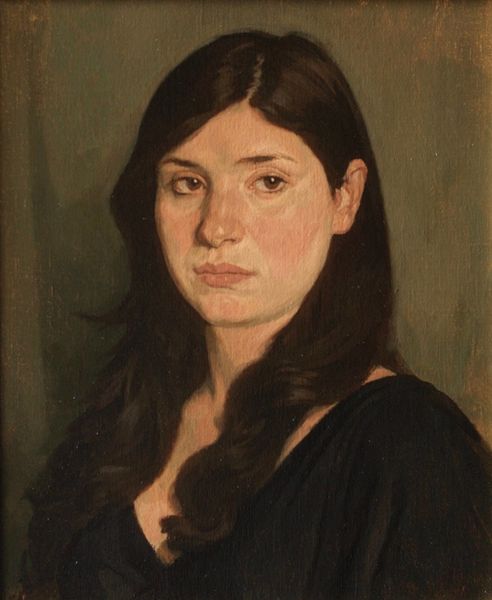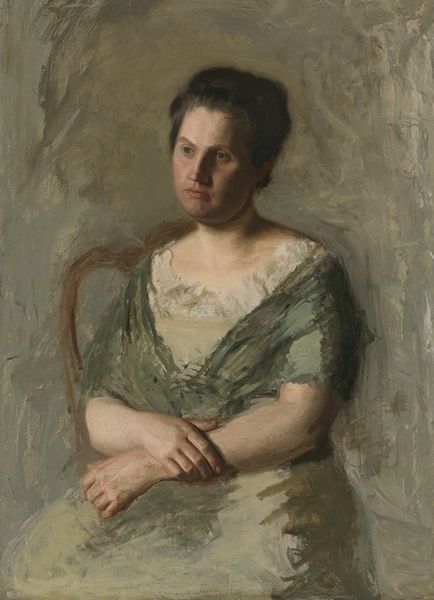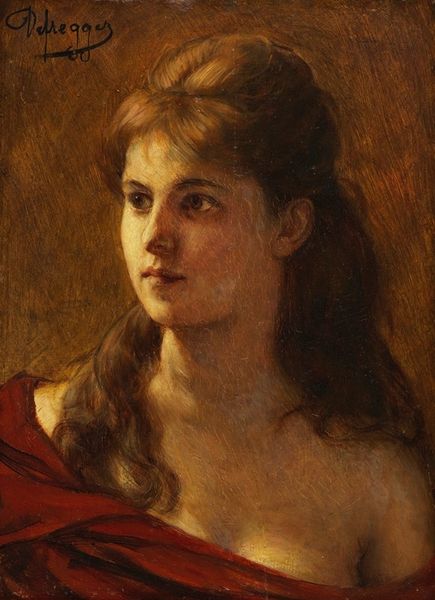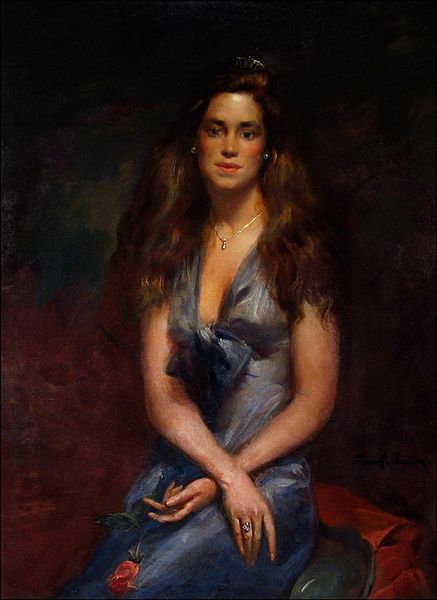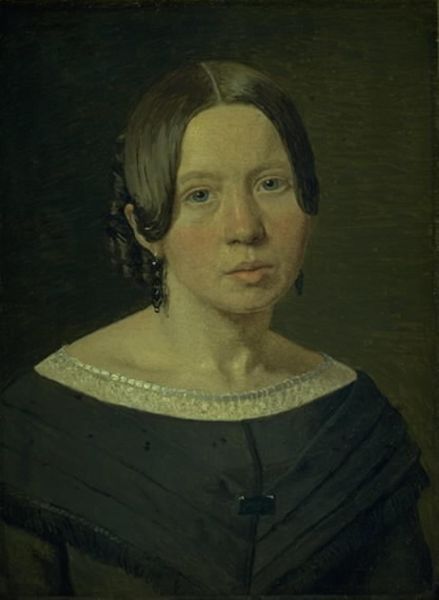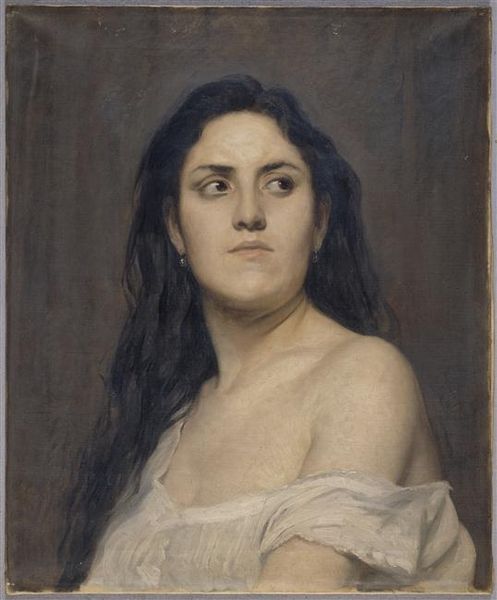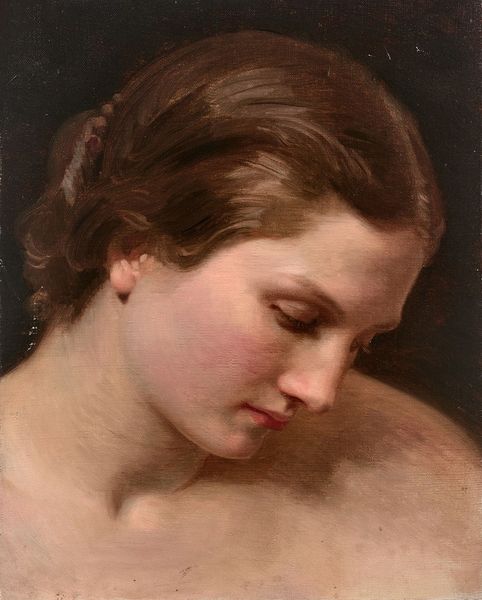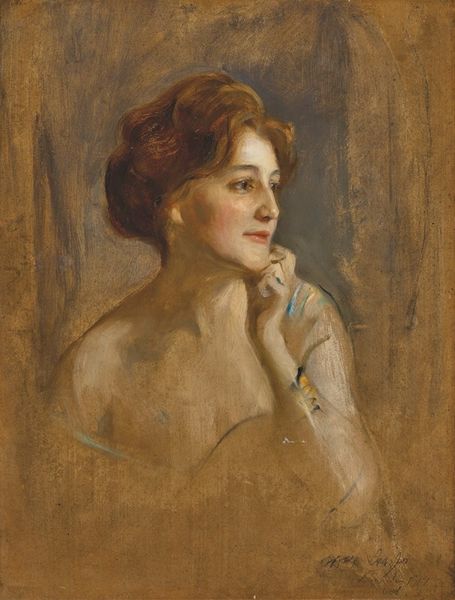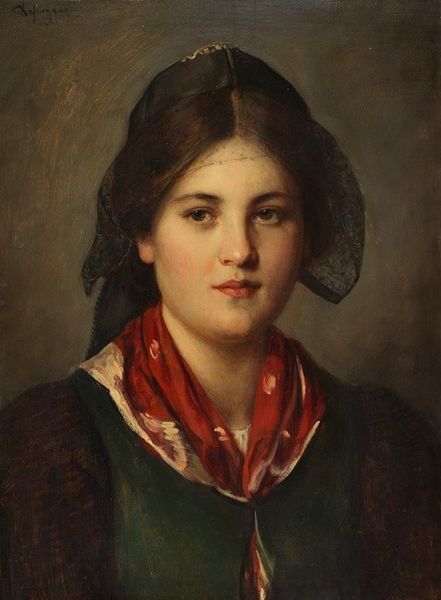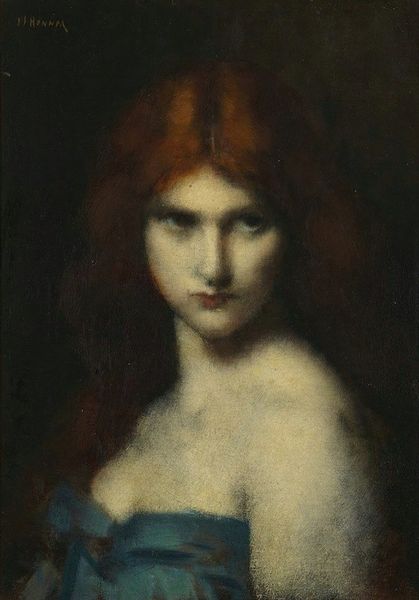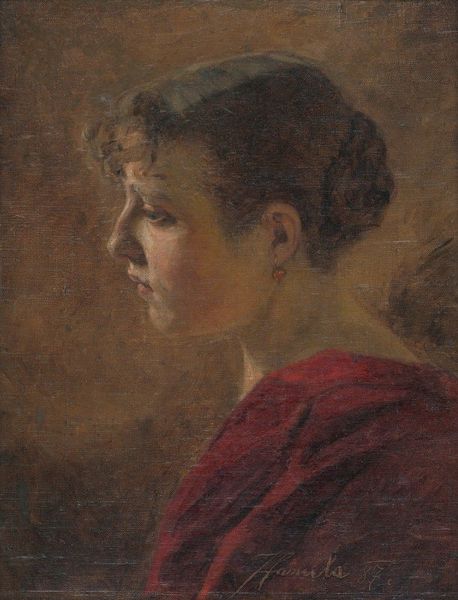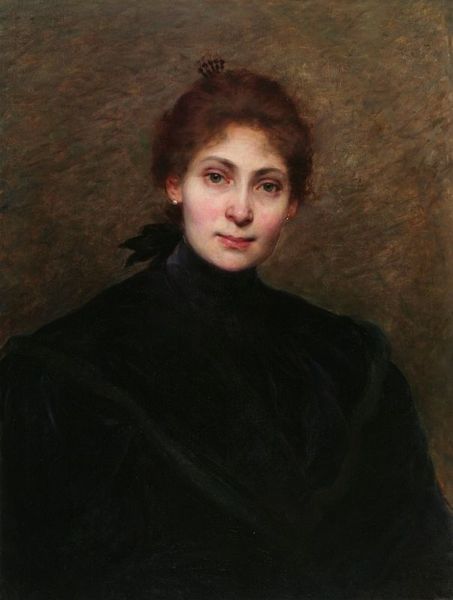
painting, oil-paint
#
portrait
#
painting
#
oil-paint
#
academic-art
#
realism
Copyright: Dana Levin,Fair Use
Curator: Here we have Dana Levin's "Scarlet," an oil painting that presents a striking, intimate portrait. What are your immediate thoughts? Editor: I’m struck by the muted palette – that subdued grey background against the subject's skin tones, and then punctuated by this gorgeous swath of deep teal fabric. It creates a serene, almost melancholic mood. Curator: I'm intrigued by that fabric you mention. Considering the artist's practice, I suspect its drape and texture are far from accidental. Perhaps this fabric was specifically sourced to create a contrast with the smooth texture of skin; it seems very intentional, grounding the composition. Editor: Intentional, yes, but does it need to be “sourced"? Maybe the intention is in the brushwork – the artist capturing how light plays across different textures. Note how her expression is so internal; all formal aspects create this psychological depth. Curator: It's hard not to consider the socioeconomic dimension. How accessible were these materials? Who owned or produced the pigments and cloth that make up "Scarlet"? Labor and capital were clearly funneled into this image. The subject’s identity becomes obscured. Editor: But look at the mastery of light and shadow – how the artist uses chiaroscuro to sculpt her face, pulling you into the subject’s gaze. Ignoring those aesthetic choices would neglect crucial artistic decisions about composition. This formal structure of shapes is really so well observed! Curator: Of course! But these decisions also carry cultural weight, embedding specific power structures related to representation. The painting embodies historical artistic practices while reproducing specific societal narratives that favored certain perspectives. Editor: I see your point. Yet it feels crucial to value artistic construction, especially in how the work constructs emotional depth for viewers. Her face captures feelings beyond surface likeness, with the overall effect exceeding simple material circumstances. Curator: Absolutely; both coexist, allowing viewers a broader comprehension. The canvas isn't simply an image, it’s a result from layered contexts. Editor: Ultimately, then, perhaps "Scarlet" invites contemplation about portraiture, and it brings out these interesting conversations for our audiences.
Comments
No comments
Be the first to comment and join the conversation on the ultimate creative platform.
